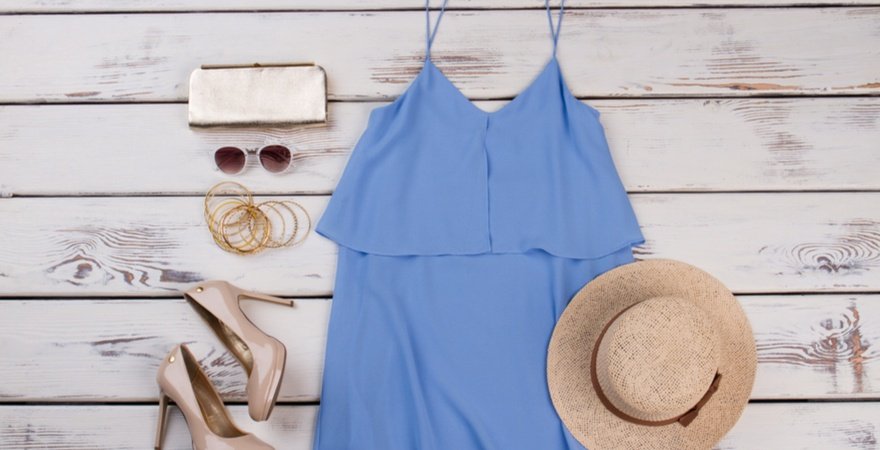If you’ve been thinking (or dreaming) of owning your own line, now is the perfect time to learn how to start a clothing business online.
Research shows that the online clothing industry is booming, continuously growing year after year. According to Statista, the retail ecommerce industry was worth $102.5 billion – and will explode to $153.6 billion by 2024.
That’s 50 percent growth in just a few years. Dang.
Starting a business from scratch might seem intimidating. And I won’t lie: it’s a lot of work. But if you’re willing to stick with it and put in the time, resources, and effort, the reward can be incredible.
That’s why this article is loaded with helpful advice and resources on how to start a clothing line and market it successfully. We’ll outline 10 steps on how to run a clothing business, plus look at a few beautiful store examples.
Let’s get into it.

Don’t wait for someone else to do it. Hire yourself and start calling the shots.
How to Start a Clothing Line or Brand in 2021: 10 Steps
1. Identify a Need in the Market
You might already have some ideas for what you’d like to sell. That’s great news, but don’t jump in just yet.
One of the biggest reasons that new business owners fail is that nobody actually wants what they’re trying to sell. And it would be a downright tragedy if you went through the whole process of learning how to start your own clothing line but never found the success you hoped for.
That’s why market research is your best friend at this stage.
There are plenty of free and paid resources where you can make sure that there’s a market need for your clothing.
There are two types of market research: primary market research, which is data you collect on your own, and secondary market research, which is data you get from other sources who already did the research, like Nielsen, NPD, and MarketResearch.com.
Heads up: buying research reports can get pricey. If you’re bootstrapping your business from your own pocket, you might want to focus more on primary research.
Here are some primary market research ideas:
- Search for specific items on Google Trends and see what’s steady or growing in popularity
- Dig into Facebook Analytics to learn about the likes, interests, and behaviors of people who might be your future customers, or your target audience (more on that soon)
- Do some competitor research on other online clothing brands to see what people love and what they don’t (pay special attention to negative comments – that’s where you can swoop in with a solution to their problems!)
Here’s a quick search for “crop tops” on Google Trends. It’s had a pretty steady level of popularity the past year, and they’re projected to spike as the spring approaches.
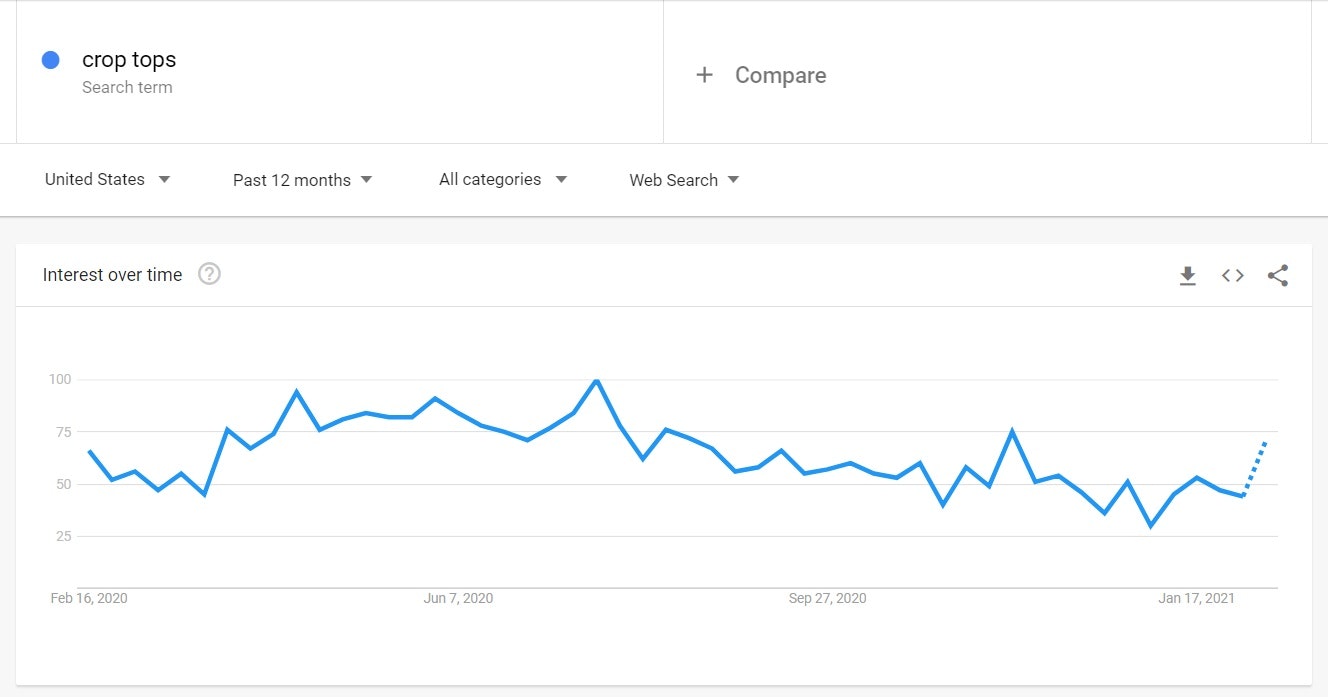
2. Identify Your Target Audience
Identifying a need and identifying a target audience go hand-in-hand, because it’s a specific group or groups of people who will need or want your products.
And those groups are your target audience. These are the people who you’ll spend every day trying to engage and connect with. The better you understand those people, the stronger your chances of securing and keeping them as customers.
If you want to learn how to start an online clothing store that’s truly successful, you’ll have a deep understanding of your target audience.
Do your research until you understand both the demographics and psychographics of your target audience:
- Demographics: age, gender, income, marital status, geographic location, etc.
- Psychographics: their likes and dislikes, hobbies, interests, lifestyle traits, buying behaviors including the companies they currently shop with and why, the problems they have in their lives and how you can help solve them
3. Write Your Clothing Line Business Plan
A good fashion business plan outlines:
- Who you are as a company, including your team, company mission statement, and what you sell
- What you’re trying to accomplish, including specific, actionable, and measurable business goals
- Why you think the company will be successful (this is where your market research comes in)
- How you plan to meet your business goals, backed by specific steps and strategies
Ideally, your clothing business plan covers the first three to five years of your business. Of course, things won’t always go exactly as planned, but you need to have something to work toward.
More importantly, you need to have something to compare your progress to so that you can better understand if you’re on track to meeting your goals, or if you need to make changes to your original plan.
Plus, your clothing line business plan is what you’ll show to potential investors and partners (step 10 in this article). If your plan is thoughtful, strategic, specific, and promising, you’re much more likely to get people on board to support your business and help it grow.
The U.S. Small Business Association (SBA) has great resources for writing a business plan, including how to lay it out section-by-section.
4. Start Designing Your Own Clothing Line
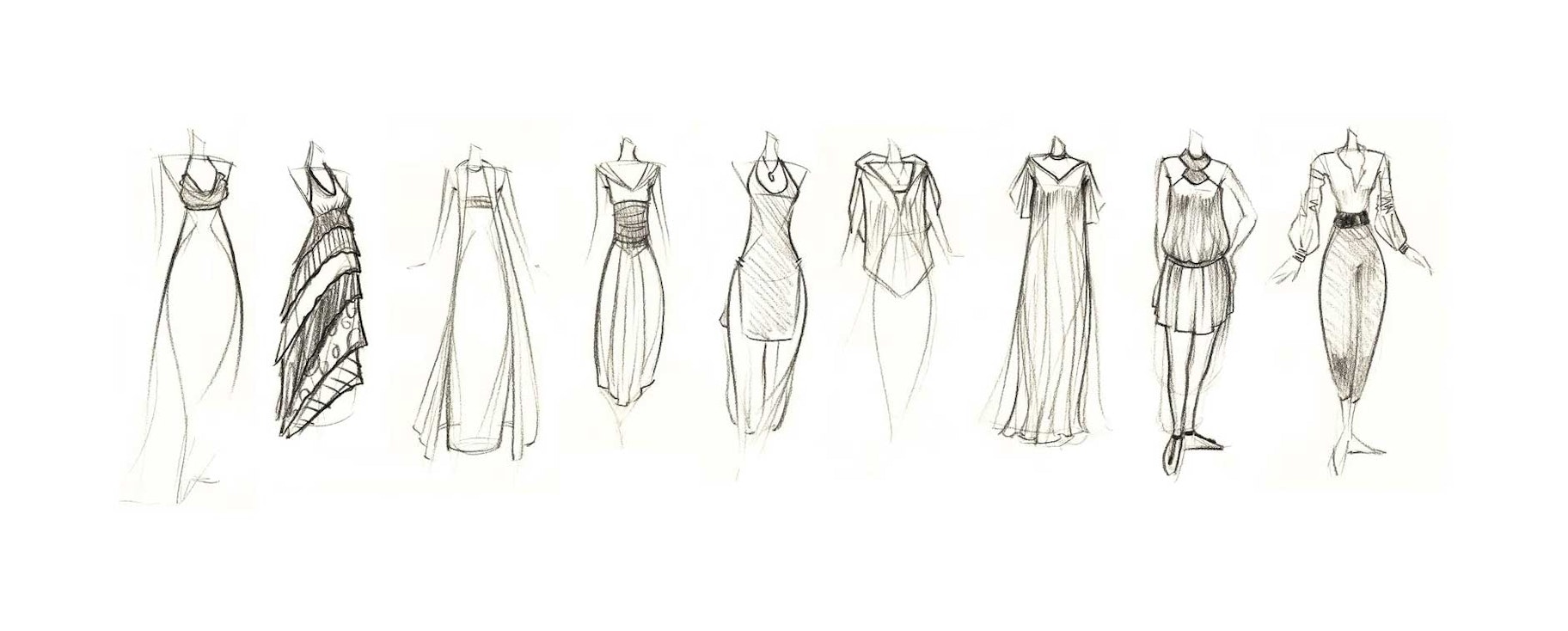
Now for the fun part. Get your creative juices flowing and create your masterpieces.
Here are some things to keep in mind when designing your clothing line:
Keep a sketchpad on you at all times. You never know when creativity will strike – so be sure you’re always ready to jot down new ideas and inspiration.
Don’t compromise on materials and overall product quality. Especially if you’re building a luxury line or boutique, your customers will know if you’re cutting corners to save money.
It’s a great idea to create your own samples. An intimate understanding of the process will help you run your clothing business more smoothly, especially while negotiating costs with your manufacturer. But don’t get so caught up in the technical side that you’re sacrificing your creativity and ability to design new pieces.
Start building your “tech pack” early. This is the basic info you’ll hand off to your manufacturer when it’s time for them to produce your clothing line. Your tech pack should include technical specifications and product details like measurements, materials, and accessories.
5. Find a Clothing Manufacturer
On your journey to learn how to start a clothing company, finding the right manufacturer is a big deal. That’s why you should take the time to do your research and properly vet your options before you make a decision.
Here are some tips for finding a clothing manufacturer.
Consider whether you want a domestic or overseas manufacturer
You might save money with an overseas manufacturer, but find that it’s not ultimately worth the potential drawbacks, like longer delivery times or lower product quality.
If you're from the US, you can find local clothing vendors on Handshake, a hand-picked wholesale marketplace that connects small businesses with US-based manufacturers and wholesale distributors.
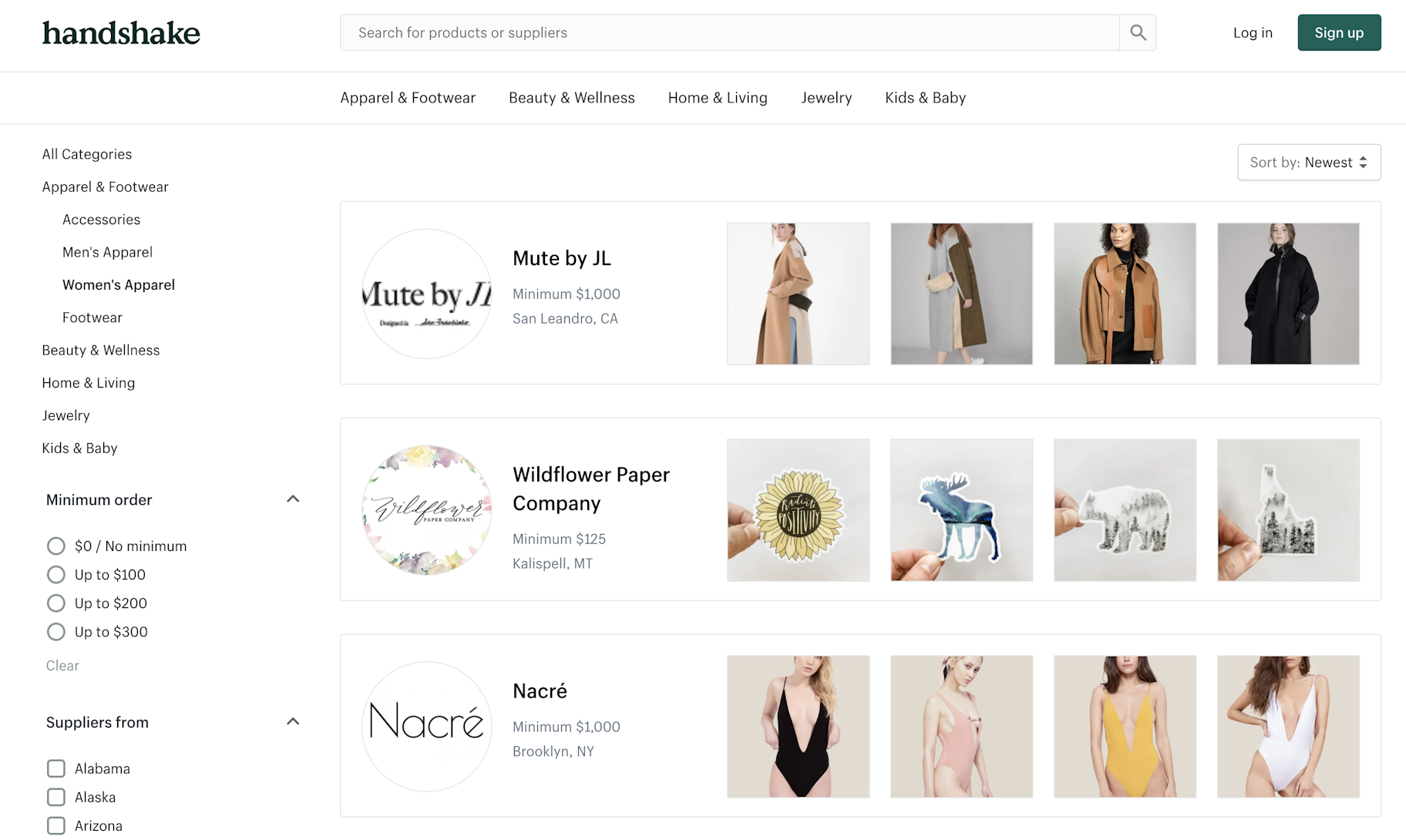
Get creative with your search
Do a good old-fashioned search on Google, and look through social media sites like Facebook groups. You might also find industry meetups, directories, or networking opportunities.
Once you have a list of manufacturers, vet them thoroughly by asking plenty of questions and taking note of their response times. Check online to see if they have any good or bad reviews from other clothing companies.
We have a whole guide on how to find a clothing manufacturer. Check it out.
6. Build Your Clothing Brand
It’s time to develop the creative materials that represent your clothing line: things like your brand name, logo, graphics and illustrations, product photography, and color palette.
Doing all the branding and design work can seem intimidating. If you don’t have any design skills or the budget to hire a professional developer, there are plenty of free, beginner-friendly resources to help you keep things affordable.
Check out Shopify’s tools page to see what’s on offer, like their:
Just to name a few!
Check out this logo I made in 30 seconds for a made-up company called RedThreads.
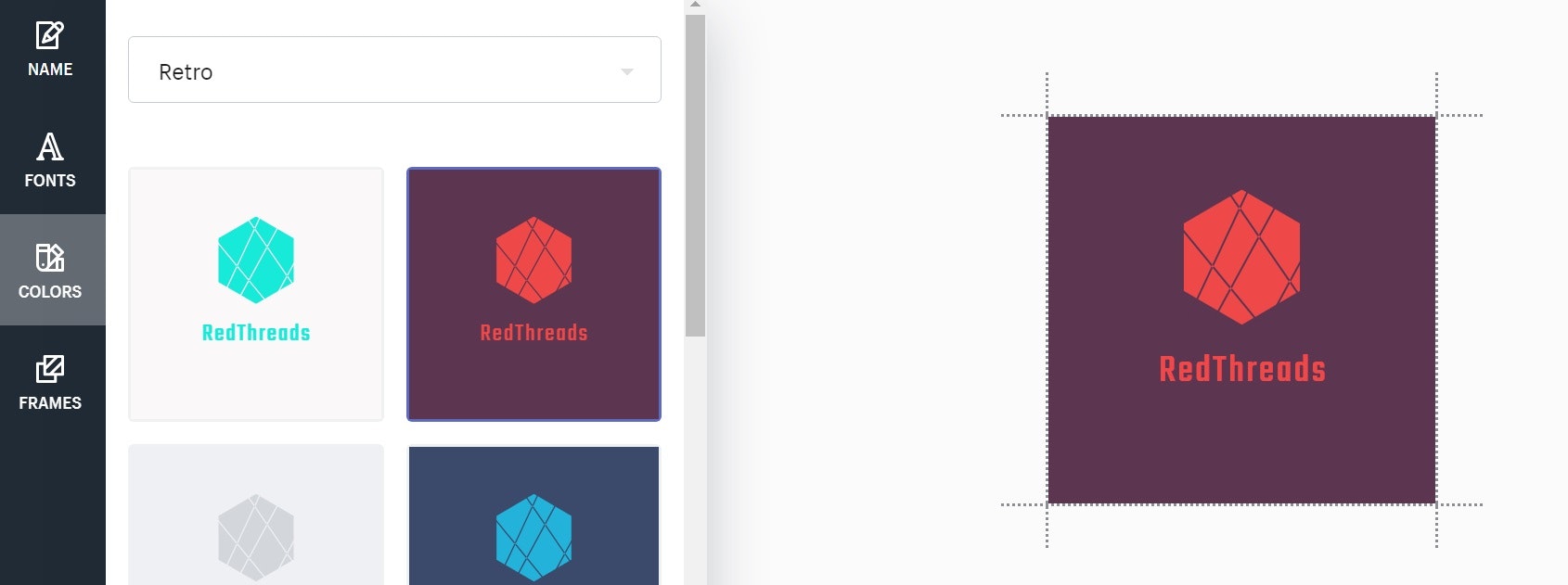
You can also find an affordable graphic design freelancer on marketplaces like Fiverr, 99designs, DesignCrowd, or Upwork.
7. Choose a Price Point for Your Items
To choose an appropriate price, you’ll need to have a good understanding of how much it costs you to manufacture the items, also called the cost of goods sold (COGS). COGS includes things like the cost of materials, labor, and production.
You’ll also want to consider the overhead for running your clothing line, like how much you pay in rent for your warehouse, shipping costs, and payroll for your employees.
Once you know how much it costs to run the business, you can choose a price that covers those costs as well as makes you some profit after all the bills are paid.
One common pricing method is called the keystone markup, where you simply double the price. So if it costs you $10 to manufacture a blouse, you might sell it in your store for $20. Or, you can sell to wholesalers for $20 and sell in your online store for $40.
However you decide to price, make sure you’re also considering how much your target audience will be willing to pay. It might take some experimentation to find the perfect price point.
Check out this article on pricing strategy for more tips.
8. Begin the Marketing Process
Marketing is a critical part of learning how to run a clothing business online. After all, nobody will buy from your store if they don’t know it exists, right?
Ideally, you should start setting up your marketing before your clothing store even launches. That way, you’re ready to hit the ground running.
You start setting up Facebook Ads, which is a popular advertising method for clothing companies to build their customer base. Facebook has incredible targeting capabilities that help you reach the right people.
If you’re tight on ad budget, you can start with organic social media marketing strategies, which focus on creating excellent content that engages and entices people to follow and shop with you.
Influencer marketing is a great idea for a low budget: offer free items in exchange for shoutouts from social media users with a strong follower base within your target audience. Here’s Instagram influencer @gonolivier posting to promote a new denim line from clothing company boohooMAN.
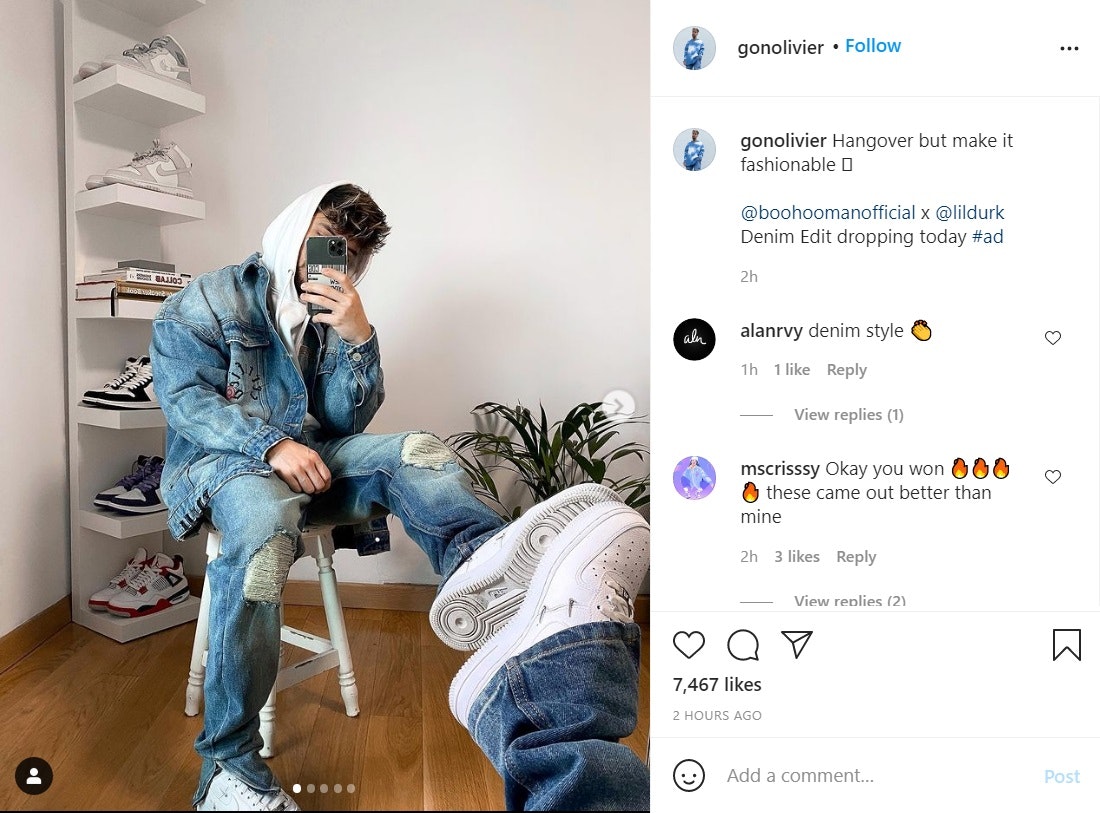
You can also host a giveaway to build your email list before your store goes live, then use email marketing to build stronger relationships with them after the launch.
Check out our marketing hub to learn all about building awareness for your brand and getting customers.
9. Set Realistic Sales and Distribution Goals
You know that old saying, “Rome wasn’t built in a day.” Same goes for anyone mastering the art of how to start a clothing business.
In the early stages of your company, you’ll have a lot to learn. A lot of trial and error. A lot of testing and tweaking and testing again.
Make sure you’re going easy on yourself by setting realistic goals. It’s not realistic to say you’ll make a million dollars your first year (though it is possible!).
A more realistic goal might be to grow your revenue by 20% every quarter for the first year you’re in business. This kind of growth-oriented goal helps to make sure you’re not choosing arbitrary financial figures that just aren’t attainable.
The same goes for distribution if you’re figuring out how to start a fashion line that’s sold in other stores. Start with the goal of finding a few strong distribution partners your first year, then incremental growth from there.
10. Start a Soft Launch, Then Look for More Investment and Partnerships
Now that you’ve set up a presence and built up some anticipation, you can launch your masterpiece into the world.
This is when you can pull the trigger on all the marketing campaigns you’ve been working on. Keep working and building on them – just like everything else on the journey of how to start a clothing company online, you’ll need to keep experimenting and building as you go.
And this is when you can turn your sights to growing on the business side by seeking out more investment dollars and partnerships with other companies.
Try pitching your clothing line to retailers who are already selling products to your target audience. Depending on the size of the company, you may need to reach out to multiple people before you can secure a meeting. Keep at it!
The same goes for finding investment partners. Polish up your business plan to present to them – be sure you’ve nailed down specifics, like how much money you’re asking for and where those dollars will be spent within your business.
And of course, make sure you’re offering a juicy incentive for them to choose you. Will they get partial ownership of your company, or a certain percentage of your revenue once you successfully grow?
Clothing Business Store Examples
Let’s look at a few great Shopify clothing stores for inspiration.
Khara Kapas means “pure cotton” in Hindi. The company boasts handcrafted clothing made from pure and homegrown Indian fabrics. It does an excellent job of showcasing this in their product photography, creating a natural, down-to-Earth feeling that instantly appeals to their audience.
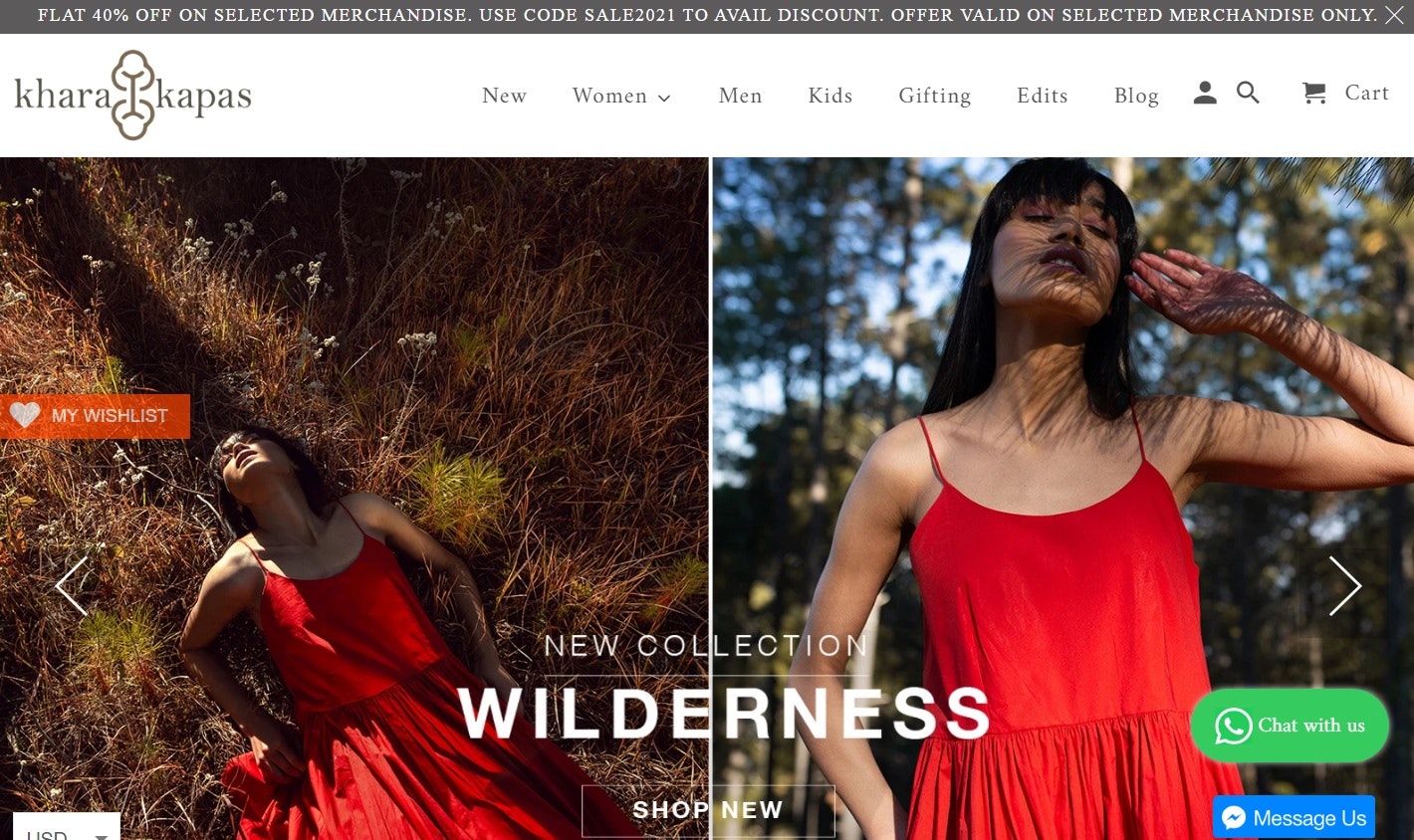
Pour Moi is a UK online clothing store for lingerie, swimwear, nightwear, and more. They’ve created a sleek and sexy brand that appeals to stylish women who want to look and feel good.
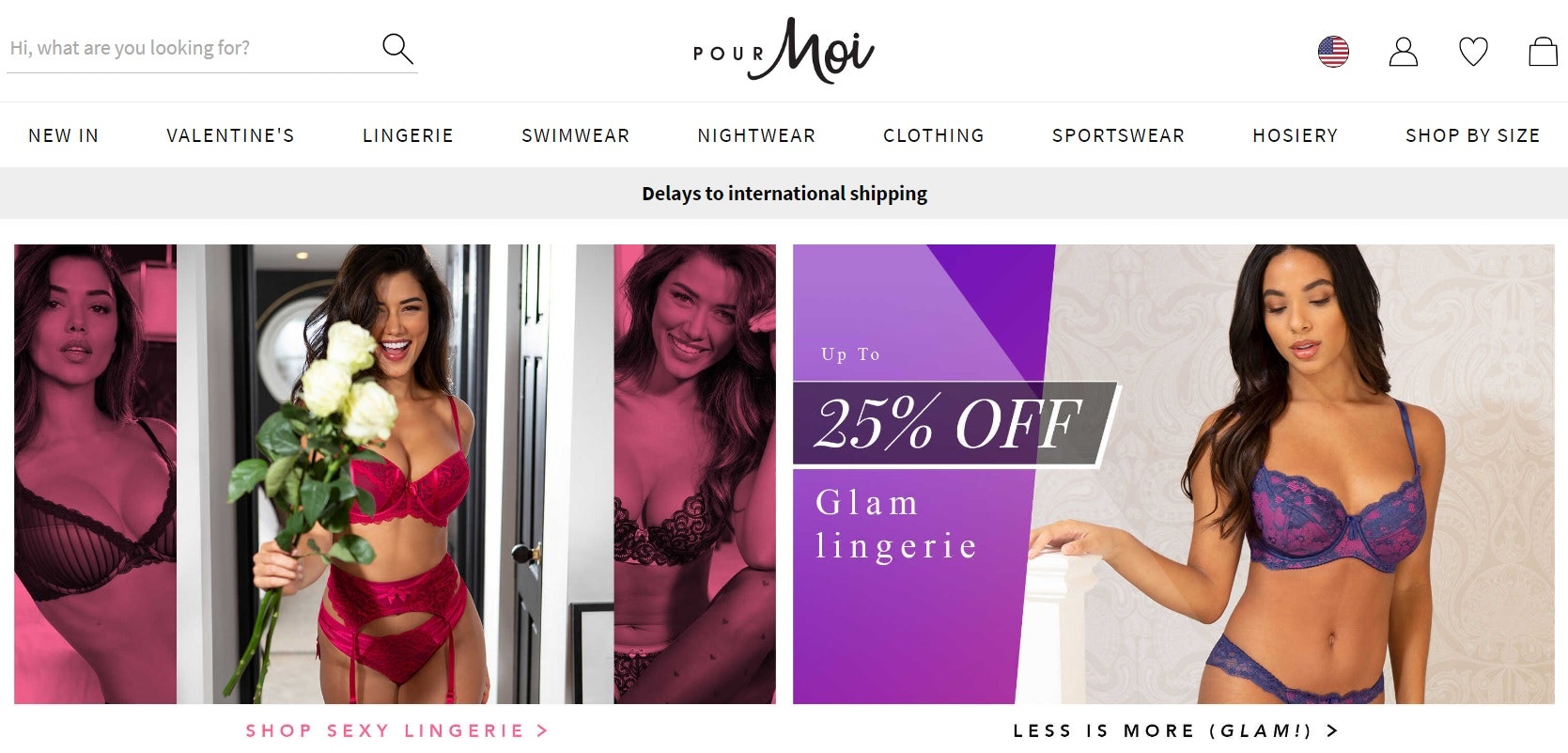
The Candi Factory is owned and operated by Candice Levine, who makes all products from start to finish in Toronto, Canada. The brand has a lot of personality and it’s showcased beautifully on the company’s website. Candice is a perfect example of an entrepreneur who learned how to start selling clothes online and absolutely nailed it.
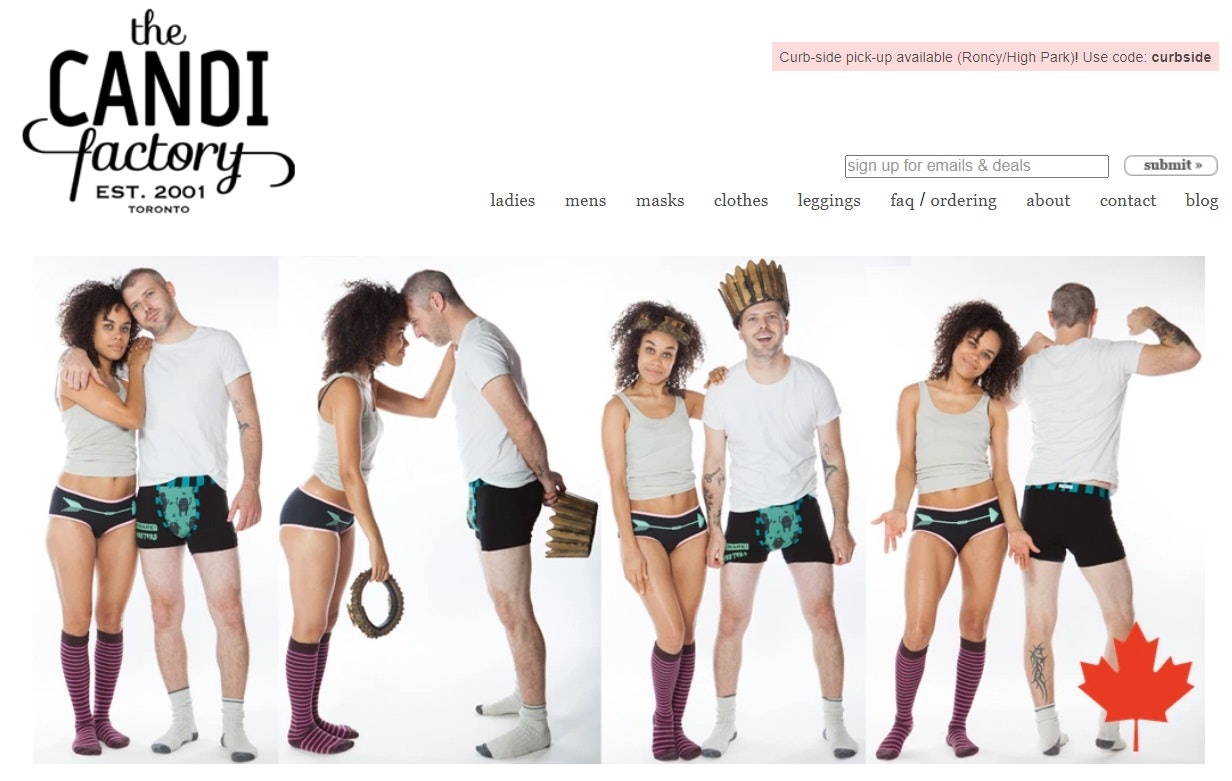
Should You Start a Clothing Business? Yep.
By now, you should have a solid idea of what it takes to learn how to start a clothing business online.
The most important thing to keep in mind is that you won’t be a millionaire overnight. You’ll need to constantly try new things, keep track of your progress, and tweak what isn’t working.
Like I mentioned: it’s not a walk in the park, but when you have the passion and dedication to do it right, you’ll find that the rewards can be amazing.
You’ll never know if you don’t try, right?
Summary: How to Start a Clothing Business in 2021
- Identify a market opportunity
- Find your target audience
- Write your clothing line business plan
- Start designing your own clothing line
- Find a clothing manufacturer
- Build your clothing brand
- Select a price point for your items
- Start the marketing process
- Set realistic sales and distribution targets
- Have a soft launch, then look for partners and investors
Are you excited to start your own clothing line? What niche are you going to target? Let us know in the comments section below.
Want to Learn More?
- What Should You Sell Online?
- Create T-Shirt Mockups That Will Make Your Designs Look Great [VIDEO]
- How to Find the Perfect Dropshipping Products
- [EBOOK]: 50 Ways to Get Sales With Dropshipping


